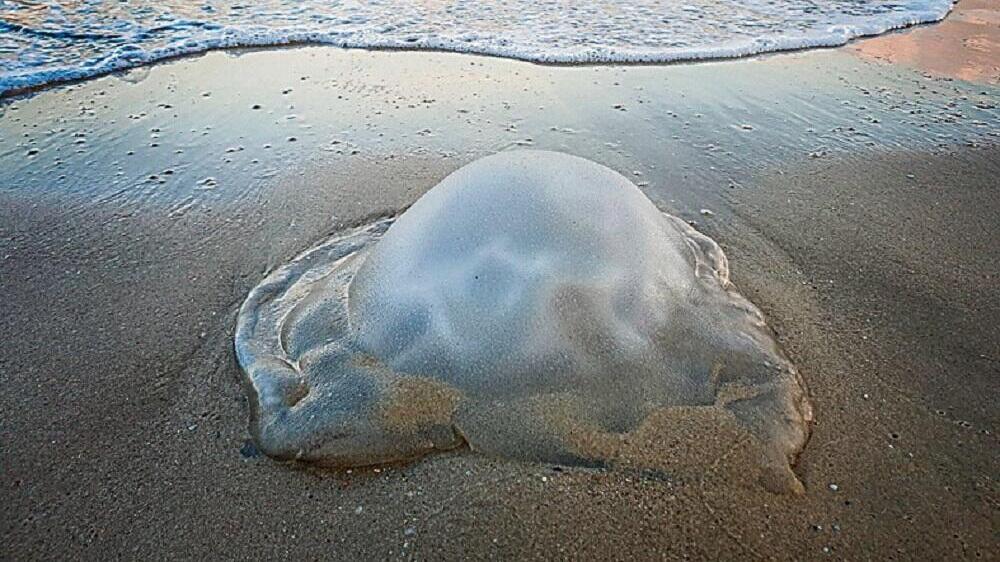Getting your Trinity Audio player ready...
Jellyfish off the cost of Israel
The nomad jellyfish, Rhopilema nomadica, most common to Israel's shores, swims against currents, a new study conducted by Haifa University's School of Marine Science and published in the journal Current Biology found. Researchers previously believed the jellyfish drifted passively at sea.
The researchers said their study showed that the movement of jellyfish "is modulated by distinctly directional swimming patterns that are oriented away from the coast and against the direction of surface gravity waves," to increase their chances of survival.
"Using new research methods, we found that along the coast of Israel the jellyfish were swimming to the west, against the movement of the waves," said Dr. Yoav Lehahn.
Jellyfish have been around for 500 million years and have undergone few morphological changes, but they are still a mystery to scientists, especially those studying their patterns of migration.
The difficulty in predicting where and when swarms of jellyfish would arrive on Israel's coast makes protecting critical infrastructure such as water desalinization plants, difficult.
"If they were passive in their movements, we could predict their path according to the currents. The fact that we cannot indicates that they have the ability to swim, although we cannot fully understand how," the researchers said.
For their study, the researchers used aerial surveillance along the shore from Ashkelon in the south to Nahariya in the north, to detect and map clusters of jellyfish.
They then recorded their movement using drones launched from research vessels at sea and compared the movement to sea currents and waves. "These methods allowed us to analyze the data using mathematical models," Lehahn said.
The study found that the nomad jellyfish can navigate. They swim together at the speed of 10 cm per second, against the movement of the waves. But they cannot always determine their movements, if the currents are strong, often washing them up on shore, where they die, especially after storms.
"The study brings us closer to being able to understand the movement of jellyfish and in the future be able to determine when they will arrive on our shores and when they will leave," the researchers said.






